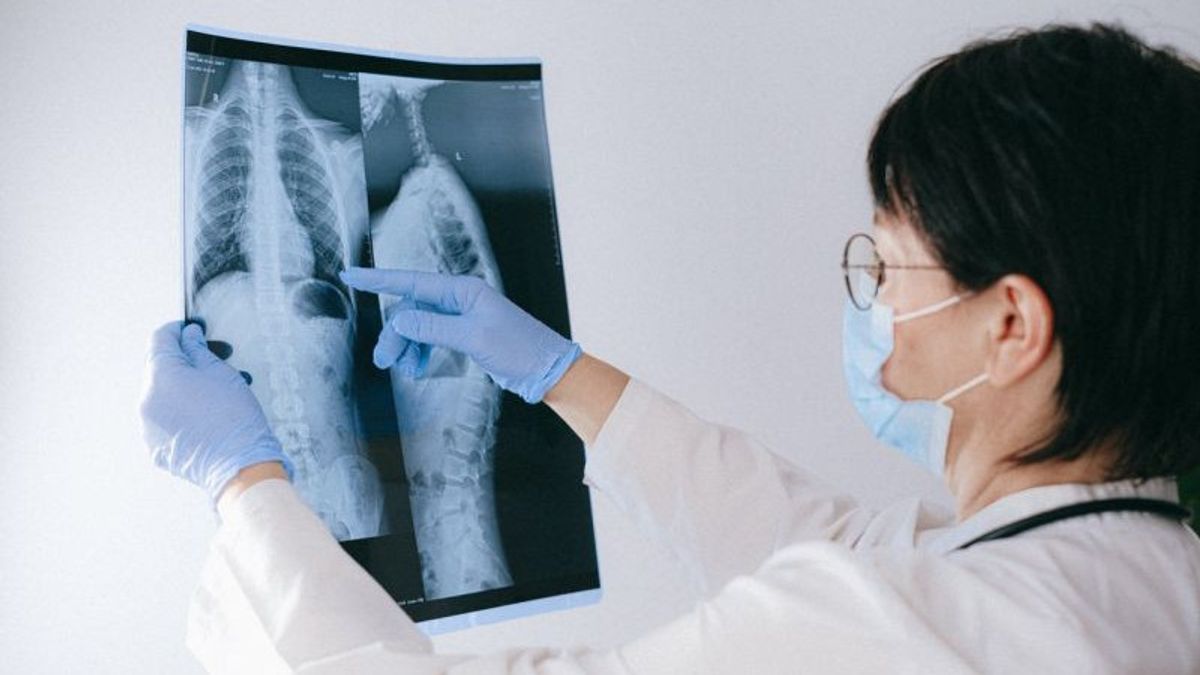JAKARTA - Cough and shortness of breath that do not improve in someone who does not have a history of smoking can be a sign of lung cancer. Lung Specialist from Mayapada Hospital Surabaya dr. Bambang Susilo Simon, SpP, FCCP, FAPSR, FISR, asked people with these symptoms to be more careful.
"Mayapada Hospital Surabaya recently visited an elderly female patient aged 70 years. The patient came with complaints of cough and shortness of breath that did not improve without a history of smoking. The patient was immediately examined for a lung X-ray and a CT scan of the lungs with contrast. A tumor was found in the lung. on the right and fluid in the cavity of the membrane covering the lungs in that area," said dr. Bambang was quoted from ANTARA, Saturday, April 9.
The doctor then takes the fluid and performs a bronchoscopy (lung biopsy) to determine whether the lung tumor is dangerous or not. flexible with light and camera at the end.
Bronchoscopy is used to obtain a sample of mucus or lung tissue for a biopsy, to remove a foreign body or other blockage in the lung passages, or to provide medical therapy for problems in the lungs.
"The results of the lung biopsy and CT scan of the 70-year-old female patient revealed that the patient's diagnosis was Non Small Cell Lung Cancer - Adenocarcinoma stage 4," he said.
Lung adenocarcinoma is the most common type of primary lung cancer and is the most common type of lung cancer experienced by non-smoking Asian female patients.
Basically, the main risk factor for lung cancer including adenocarcinoma is smoking. In addition, other risk factors include a family history of lung cancer, gene mutations, and exposure to smoke, chemicals, and heavy metals.
Symptoms of lung cancer include a persistent cough, coughing up blood, shortness of breath, chest pain, difficulty breathing and swallowing, and weight loss for no apparent reason.
"Treatment of lung cancer, including adenocarcinoma, depends on the stage, location of the cancer, and the patient's overall condition. In this patient, the initial therapy is chemotherapy to prevent the spread of cancer cells while waiting for the results of the genetic analysis of lung cancer cells, where later the type of drug used will be adjusted according to the results of this examination," said dr. Bambang.
Early-stage lung cancer usually does not show symptoms, whereas if it is symptomatic, the cancer usually has entered an advanced stage. For this reason, early detection of lung cancer is very important, especially for those who have risk factors.
Examination is recommended from the age of 40 years. Examination with lung LDCT or Low Dose CT Scan of the lung can detect lung cancer even at an early stage compared to lung X-ray examination. If detected early, the success rate of therapy will certainly be higher.
The English, Chinese, Japanese, Arabic, and French versions are automatically generated by the AI. So there may still be inaccuracies in translating, please always see Indonesian as our main language. (system supported by DigitalSiber.id)













